HOME | ABOUT US | MEDIA KIT | CONTACT US | INQUIRE
HOME | ABOUT US | MEDIA KIT | CONTACT US | INQUIRE
PUBLISHED OCTOBER 2024
Hard to believe, but it’s been more than 25 years since the very first class of Ingram’s Top Doctors debuted, and this year, we induct 16 new faces into that elite fold. That brings the grand total since 1999 to 352.
That may sound like a lot until one puts that figure into perspective. Precise figures are elusive—and, unfortunately, dated—but the Bureau of Labor Statistics and various medical associations suggest the number of physicians working in the Kansas City region today is somewhere around 8,000, including family practitioners, specialists, M.D.s and D.O.s.
Through the history of Top Doctors, several thousand have retired since 1999. Given that the average physician’s working career covers a span of about 35 years—they get a late start, given the years of training—and that new cohorts have come in to replenish the ranks, the universe of practicing doctors eligible for consideration over the years has easily surpassed 12,000.
When you put 352 against that backdrop, we’re not talking about the top 1 percent of physicians—it’s a mere fraction of that. Closer to 0.29 percent of doctors here. Rare company, indeed.
A couple of other data points will help you understand the magnitude of the challenges physicians face today: Just a decade ago, total patient admissions at the 30 largest hospitals in this region stood at 269,105. Ten years later, the figure has swelled by an even 20 percent, to 323,048 last year.
The physician pool, however, has not seen corresponding growth. We’re asking doctors to do more today than ever before. The demand for their services will only increase with the greying of the nation’s population.
Each year, a growing alumni base adds fresh perspective to the candidate field, which helps produce a stronger list of potential honorees. The highest-ranking executives at area hospitals also weigh in. And whether they’re new to the process or the most recent recipients of the Top Doctor designation, all are asked to address one question: If you or a loved one needed the best medical care available in this market, which physician would be your choice for that care?
This year, we recognize a group that includes specialists in cardiology, oncology, pediatric medicine, surgery, urology, pulmonology and family medicine—16 physicians who exhibit the highest levels of care, compassion and competence as providers. Please join us in congratulating them.
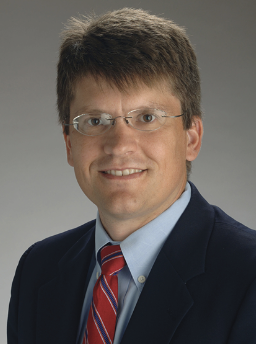 Jeff Burns
Jeff Burns
The University of Kansas Health System
Jeff Burns had a plan. Then, an epiphany. The plan? Leveraging a double major in English and Japanese into a career in international business, starting with a summer internship. The epiphany: “By the end of the summer, I realized I wanted to have a bigger impact on people and my community, and I felt that medicine would allow me to do that,” he says. “So deciding to go to medical school was a significant shift in direction.” But one that pays off for his patients at the health system, where he’s a neurologist with a particular emphasis on Alzheimer’s patients. That he’s here at all, even as a Prairie Village native, is a testament to the hospital’s growth and ability to amass the resources Burns wanted, allowing him to start building what has now become the Alzheimer’s Disease Research Center. Why neurology? “I’ve always been fascinated by neurology and the brain,” he says. “I figured that if I were going to dedicate my career to one area, it might as well be something as complex and interesting as the brain. I also anticipated that the field would see significant changes during my career, and being part of that evolution was exciting to me.” That field, he says, is undergoing a major transformation thanks to two key advances: “New blood-based diagnostic tools that give us insights into what’s happening in the brain, and new therapies that we’ve been involved in developing over the past 15 years.” They have combined in clinical practice to reshape the delivery of patient care. “This shift is forcing us to rethink care delivery to ensure it’s accessible to everyone who needs it,” Burns says. “Conversations with patients have completely changed in the past few years, and the field must keep up. We need to identify the right patients using these new diagnostics and ensure they receive the appropriate treatments. Expanding access to care is a significant focus for me as we work on new models that can scale to meet growing demands.” And demand, regrettably, is destined to increase with an aging population. “And with that comes a responsibility to find better ways to deliver care to all those who need it,” Burns says. “No one has yet figured out how to do this well, but it’s something we must develop.” That task comes with an urgency he brings to work every day. “The dedication, innovation, and teamwork that goes into what we do—whether it’s empowering patients and families or advancing our research—reaffirms my commitment to this field,” Burns says. “While we haven’t found a cure yet, I’m proud of what we’ve accomplished and the long-term impact we’re making on our community. That sense of purpose and progress keeps me motivated.”
Every day, Sam Caughron girds for battle against a lurking killer. And every day, that enemy is a different creature. As a pathologist for AdventHealth, Caughron is engaged in a life-and-death fight with cancer—something of a misnomer of an illness since it’s never just one thing. “Cancer is unique because it’s our own cells that start to go rogue and go out of control—it’s us,” he says. “We treat like something else, but it’s a part of us, unlike an infection from an outside virus or bacteria or disease. It’s our own growth that goes awry, and it’s unique to each person.” His challenge in working with oncologists and other caregivers is to understand the particular pathways of the disease, which presents differently based on the unique physical traits of each patient and the multitude of origination points: the lining of the intestine, the brain, the lungs, and the bloodstream. “It never has been one disease,” Caughron says. His father, too, was a pathologist, but one who had also practiced general medicine—even treating the seven Caughron siblings himself. “He gave me the opportunity to understand what medicine was about and what a privilege it was to take care of patients,” Caughron says. He also gave young Sam a near-farm-life upbringing on 30 acres in exurban Kansas City. “I was milking cows twice a day, fixing fences—it gave me a real work ethic,” he says. After med school, he pondered primary care, maybe even a surgical specialty. “What I found was, my personality and what I enjoyed was a better fit for pathology,” he says. “I always enjoyed trying to figure out how things work—took a lot of stuff apart when I was a kid. And now, in pathology, I get to figure out what’s going on and work with colleague physicians on the complex side of medicine.” He does that through the hospital affiliation and his company, MAWD Pathology Group, where he’s president and CEO. It is work with a deep personal meaning, as well. In 2010, his sister’s newborn son was diagnosed with a mass that wrapped around the great arteries and proved fatal at 17 weeks. The boy’s name: Sam. “I was calling academic centers, trying to track down what I could do at that time to help him. It just didn’t exist,” Caughron says. “My hope is that we will continue to improve our understanding of how to treat these patients’ cancer. My own son was born around the same time, and he doesn’t have a cousin today who would have been his age. But I feel like we are coming up on the day when we might have what would have been a treatment option for him. You just never forget something like that.”
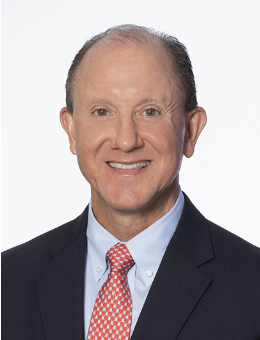 William Daniels
William Daniels
Children’s Mercy Kansas City
Life in the small farming community of Fayette, Mo., yielded no shortage of people who nurtured William Daniels’ early interest in science and fostered thoughts of different careers where its lessons might be applied. One of those figures was his eighth-grade science teacher, who instilled confidence in her students, Daniels says. At that point, “I was certain that I would become a high school biology teacher.” He reconsidered, pondering a career in medicine through interactions with the family physician. “He would always make you feel better after office visits—he felt like the favorite grandfather!” Daniels says. “He would even make house calls to care for my mother. It became clear that I would love to be able to come back to my hometown and continue his incredible work.” Still, neither teaching nor medical school would win out—not right away, at least. In college, he met a nurse anesthetist and decided to go that route, earning his certifications and practicing for three years before a final course correction back to medical school. “My areas of interest in medical school changed many times, but always came back to anesthesiology,” Daniels says. “I have always felt that you get all aspects of medicine with anesthesiology.” Dreams of Fayette were back-burnered after his chief residency year at Children’s Mercy and the influence of “some incredible anesthesiologists,” he says. “It became perfectly clear that my life needed to be at Children’s, caring for kids and working with the individuals who trained me.” It’s been said elsewhere, but it rings particularly true in medicine: “Children are certainly not little adults,” Daniels says. “Their anatomy and physiology are different in many ways. The loving innocence of children makes taking care of them on a daily basis so rewarding.” Over the course of his career, the field has seen vast improvements in medications, equipment, safety, and education, he says, and “the continued efforts to monitor and improve the care we deliver to patients will never come to a close—there will always be a better way to do things. Hence, we must continue to evaluate our outcomes so the improvement can continue.” Almost on a daily basis, he says, his young charges will do different things that keep everything else in perspective. “The ultimate goal is a positive outcome after surgery and anesthesia—that is why we do what we do to the best of our abilities,” Daniels says. “My profession has given me the ability never to take a day for granted because tomorrow is not promised to anyone.”
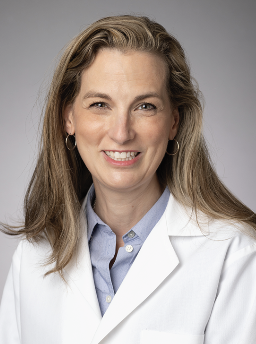 Nicole Fearing
Nicole Fearing
Bariatric and Metabolic Specialists/HCA Midwest Health
Some get into medicine by answering a call to serve. Some through the inspiration of a doctor, nurse or teacher from their youth. Some because they want to just help people live better lives. All of those were elements in Nicole Fearing’s career pathway, but she adds an element rarely expressed among our Top Doctors: Fun—especially in her line, minimally invasive surgery and now bariatric surgery. That aspect keeps her engaged. Her first exposure to surgery, she says, “was fun: laparoscopic skills, those techniques were fun to do.” The post-surgical part was attractive, as well: “Moving to bariatric was a way to do basic medicine with patients, but also make a big change in patients’ lives. You didn’t have to let them go after surgery, the way you might with an appendectomy, so you get to see them for a long time afterward, develop relationships, and you’re making ginormous changes in their lives. They lose a lot of weight, and they lose a lot of health problems.” Coming out of the small burg of Valley City in North Dakota, Fearing had parents who told her she could be anything she wanted. Didn’t take her long to decide what that would be. “In sixth grade, a teacher asked what I wanted to be, and I said a nurse. He said, ‘Why not become a doctor?’ I asked him, ‘Can girls become doctors?’ He was the reason I became a physician.” After medical school in her home state, she did her residency in Wichita and a fellowship at the University of Texas and then signed on in Columbia for nearly five years leading the surgical simulation unit. Her husband, a pediatric spine surgeon, was hired at Children’s Mercy, and she eventually made her way to Menorah Medical Center. During that time, the demand for bariatric surgery has soared, along with caseloads amid a national obesity epidemic. That implies a rapid change in tools and techniques. “You don’t want to get stagnant, so I learn lots of new things, such as how to sew on the inside, how to make the stomach smaller, or how to make previous bypasses smaller. There’s always a new thing,” she says. With those come better outcomes. She started in bariatrics in 2003 when the risk of death from gastric bypass was 1 in 50; now it’s one in 1,200, Fearing notes. The need for her services isn’t merely caused by overeating or lack of exercise, she says. With obesity, “It’s sleep, it’s gut health, it’s genetics. It’s a fascinating disease and No. 1 in the country, but there’s a lot of discrimination about obesity that’s unfounded. It’s still on an upward trajectory, and we’re seeing it in kids more, and waistlines are getting bigger. When that happens, it’s more dangerous for people because it increases their risk of stroke, heart attack and cancer.”
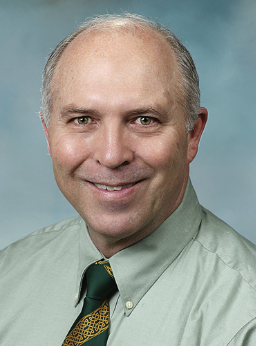 John Feehan
John Feehan
The University of Kansas Health System
He’s the quintessential Kansas Citian: Born in Wyandotte County’s Providence Hospital, raised in Johnson County’s Westwood, and after earning his medical degree at the University of Kansas, did his residency at Jackson County’s Baptist Medical Center. Douglas County’s Lawrence, he says, “is the farthest from home that I have lived.” That tethering has benefited generations of patients in his practice of family medicine for years at Olathe Health System, which has merged into TUKHS. Outstanding teachers in school, he says, supported his passions for math, biology, chemistry, and all the humanities, so “by the time I was a senior in high school, I had made the decision to pursue medicine as my career.” Inspired by his father’s guidance to be a life-long learner—Dad is still at it, at 92—and his mother’s displays of compassion as a nurse, medicine was an easy call. But which discipline? “I considered medical research, oncology, orthopedics, pediatrics, and child psychiatry,” Feehan says. A family-medicine rotation in Yates Center, Kan., did the trick with a physician who instilled the value of preventive medicine and the joy in providing care to multiple generations of families. “We did home visits, sometimes walking to the patient’s home!” Feehan marvels. Marriage to a Kansas City girl more than 40 years ago led to a decision to stay close to extended family, and his years in Olathe provided “the opportunity to care for many multi-generational families. This continuity relationship, to be invited to be an extended member of these families, has been incredibly rewarding,” Feehan says. “To share with their joys and to support them with their struggles is a blessing and a privilege.” A team-based approach has also been important to him. “I have worked as a team with the same nurse for 28 years,” he says. “Each member of our team, from the front desk to the lab, our social workers, and all of our team members, make a difference to our patients. The growth in team-based care for our patients makes an incredible difference.” Continuity with patients also generates important insights. “An example that I use is a patient who presented during an active flu season with an episodic fever of several days’ duration,” he says. “It would have been easy to attribute her illness to influenza, but recalling that she had recently returned from an extended travel adventure in Africa, I asked her if she had taken her malaria prophylaxis meds during her travels. She acknowledged that she had forgotten several doses.” Feehan ordered a malaria smear and got the confirmation call at 1 a.m. “The smear was loaded with malaria organisms!” he says. It was a testament to “the value of continuity and asking the extra question!”
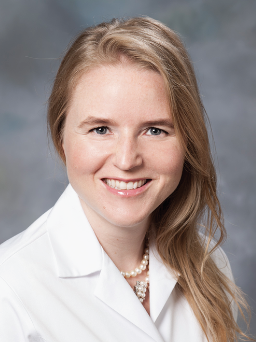 Anna Grodzinsky
Anna Grodzinsky
Saint Luke’s Health System
It’s not hard for cardiologist Anna Grodzinsky to connect with patients when it comes to cases of high-risk pregnancy: She’s been there herself. “The U.S. has the highest maternal mortality rate of any industrialized, wealthy nation,” says Grodzinsky, who was diagnosed with Type I diabetes as a child and bore the risk through her own pregnancies. “Cardiovascular conditions are the leading cause of maternal mortality in our country.” Her passion for providing care in those cases prompted her involvement in a study of more than 1,000 patients at 36 hospitals nationwide, funded by the National Heart, Lung and Blood Institute. Focusing on efforts to standardize optimal care patterns for patients with cardiovascular conditions during pregnancy, Grodzinsky says the research and development of the Heart Outcomes in Pregnancy: Expectations (HOPE) for Mom and Baby Study was “one of the most meaningful experiences of my career has been collaborating with my research colleagues. I am very hopeful,” she says, that the study’s results “will meaningfully help improve maternal outcomes in our country.” Her road to medicine started even before her own condition was known. “I’ve wanted to be a doctor since I was a toddler,” she says, but not very long after that, “I was diagnosed with Type 1 diabetes in elementary school, and as I became older, cardiovascular disease prevention became a focus of my career.” Family was part of that foundation. “My parents’ work ethic, love, and support were at the foundation of my pursuing a medical career. My parents, aunt, and grandmother all worked in the medical field in different capacities, and I’ve been fortunate to learn from them,” she says. After navigating the six-year medical program at UMKC, she made cardiology her track. “I’ve always enjoyed forming and maintaining relationships,” Grodzinsky says. “As such, serving as the ‘diagnostician” and enjoying longitudinal follow-up of my patients has always been most gratifying to me.” In addition, “I love the multi-modality research, prevention, imaging, and procedural subspecialties within cardiology—the national and international focus on cardiovascular research has offered an additional draw and creative ‘track’ within this career pathway,” she says, and she’s inspired by advances in the field and what they can mean for patient outcomes. “The pace of research influencing cardio-obstetric care as well as that focused on women’s cardiovascular health and cardiometabolic care—meaningfully influencing cardiovascular outcomes—are highlights,” Grodzinsky says. Her work interfaces with Saint Luke’s Muriel I. Kauffman Institute for Women’s Cardiovascular Research. It is, she says, “the first of its kind dedicated to studying the unique aspects of heart conditions in women with the goal of narrowing the sex-specific research gaps both in prevention and treatment of cardiovascular disease.”
 James Hall
James Hall
North Kansas City Hospital/Meritas Health
It’s not a boast, it’s a fact of modern family-medicine practice for James Hall, and one that few working physicians today can make: “I treat some patients’ great-grandchildren,” says Hall, who earned his degree from the Nebraska College of Medicine during the Kennedy administration. “It is incredibly moving and humbling for me to know that I have touched not just one life, but generations of lives within a family.” His road to medicine—literally—was unpaved. “I remember telling my mom I wanted to be a doctor when I was about 16 years old,” Hall recalls. “I used to make house calls with my family doctor in Rock Port, Dr. Wallace Carpenter. He’d let me drive his Oldsmobile on small country roads. Seeing how the community accepted Dr. Carpenter made a big impact on me.” He also credits his parents for giving him the tools he would need to succeed. After medical school, he says, “I toyed with being an OB/GYN for a bit, but the truth is, I wanted to be a family doctor like Dr. Carpenter from Day One. I like how he was such a big part of the community.” For a young doctor who had grown up in northwest Missouri, Kansas City had a particular appeal. “I had a brother living in Kansas City at the time and I was down here to visit him. I wanted to get someplace where there was a lot of action for my internship, and Kansas City General Hospital was well known for lots of action. I wanted to go to Kansas City General, which is now called University Health-Truman Medical Center, and that’s what I did.” Like many young doctors, he moved around to various locations before settling in the Northland. “I quickly developed such a patient load that it would be difficult to pick up and leave,” he says. “In the early ’70s, I thought about going back home. I even interviewed for a position. But in the end, I was too ingrained in this community to leave.” Over the ensuing decades, he says, “Every day is a new challenge. Every patient is a new challenge. Every time you walk into a room, you don’t know what you’re going to see. Just this morning, I had an admission to the hospital, a diabetic patient, and I’m getting ready to see someone who’s been my patient for 50 years. The unpredictability and challenges my patient load brings are what keep me going.” He’s practiced long enough to have seen the tools and techniques of care delivery undergo profound changes, leading to increases in prevention and early detection in disease processes of all types, he says, “but particularly with heart disease and diabetes. People are living longer as a result.”
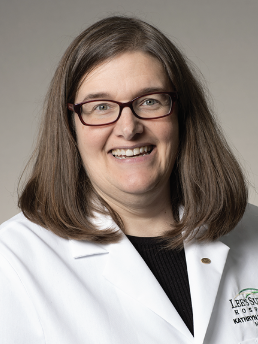 Kathryn Hedges
Kathryn Hedges
Kansas City Neurology Associates/HCA Midwest Health
It’s always nice, says neurologist Kathryn Hedges, when a patient thanks her for treatment that has reduced the frequency and severity of recurring headaches. Sometimes, though, there’s more at stake. Not long ago, a patient she was seeing thanked him for having saved his life. “He told me that I found his leukemia, sent him to an oncologist and he got treated,” she says. His gratitude for the 15 years between their encounters is an inspiration for Hedges: “I hope that I will always think about the whole patient and not just their neurologic disease,” she says. The chance to be closer to family brought this Lincoln, Neb., native to Kansas City, following medical school in Omaha and residence at Ohio State. Becoming a physician fulfilled a goal she set in high school “when I found out science was fun. I liked chemistry and biology but for both, I have to credit two excellent teachers who made it fun.” Family was also an influence, with a grandfather who had been hospitalized frequently during her youth. “I sat for many hours in hospital waiting rooms, so I got the experience of seeing how hospitals ran from the inside,” Hedges says. “Then at age 13, I became a candy-striper for a nursing home. I liked the elderly—they told great stories about their lives and also shared the candy that they won at bingo.” Neurology became her path—along with the careers of six classmates—through the influence of a senior neurologist in medical school. He would bring his own patients to class and they would describe their experiences with migraine auras or temporal lobe epilepsy. Each of the students would then be challenged to pinpoint the “mystery” of the disease affecting each patient, Hedges says. Right away, “I was hooked.” In the years since, she says she has learned to manage patients with deep-brain stimulators for essential tremors and Parkinson’s, and vagal-nerve stimulators for epilepsy. “Both are implanted devices that help control these diseases,” Hedges says. “I never thought I would become a brain electrician turning stimulators up and down to regulate these diseases.” She also has embraced new advances in magnetic-resonance imaging, which itself has come a long way since its introduction when she was still in medical school. Neurological issues are often associated with aging, and a Baby Boomer cohort whose oldest members are closing in on 80 years old suggests her services will be increasingly in demand. But there’s more to her task than treating the elderly. “Dementia numbers have gone up over the years,” she says, “because of increases in diabetes and generally unhealthy lifestyle practices like smoking, lack of exercise and processed foods.”
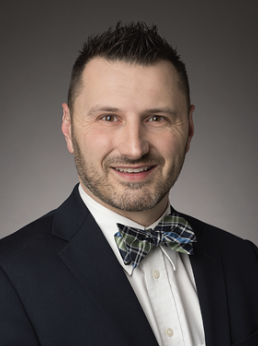 Austin Lehr
Austin Lehr
HCA Midwest Health
Thanks to his mother’s work as an operating nurse in southwest Missouri, Austin Lehr was able to connect with a local surgeon who would become a mentor. And sure enough, Lehr’s commitment to following that career track came on an operating table—but as a patient. And all it cost him was a spleen, courtesy of a high-school sports injury. That emergency operation, he says, “gave me a first-hand experience as the patient long before my opportunity to see it from the health care provider side of things.” It was a lasting impression for the lad who’d grown up on an 80-acre farm and picked up on the hard work of an over-the-road truck-driving dad while his mom pulled shifts at the hospital. Exposure to science in school had him weigh a career as a nurse anesthetist, but the shadowing opportunities he had with Dr. Douglas Nespory, his surgeon/mentor, added clarity. “The more I was able to see in surgery, the more my interest in this subspecialty grew,” he says. He found a certain appeal in “the fast pace, the high risk/high reward, the hands-on activities that provide the ability to immediately fix or cure significant health problems, alleviate pain, or eliminate cancer for patients,” he says. “I was also drawn to the wide range of possibilities and made it a goal to become proficient in treating a wide variety of surgical problems. A biology degree from William Jewell led to Kansas City University for med school, post-graduate training in Ohio, and back home to be closer to family. “Kansas City is such a great place to raise the family, and it was definitely the place to be our home,” Lehr says. “The first 7 years of my practice, I was in private practice in the Northland of Kansas City. After being a solo practitioner, I was interested in becoming part of the group and reached out to Dr. Joe Cates. The rest is history.” Laparoscopic surgery was coming into vogue as he finished training, and Lehr soon immersed himself in the new field of robotic techniques, becoming one of the region’s first general surgeons in Kansas City to adopt the technology. “We have continued to see the robotic trend continue and nearly replace the laparoscopic techniques that we once thought were so advanced,” he says. “The current technology is amazing from the standpoint of the surgeon with advanced optics, increased maneuverability, and the ability to more easily perform procedures that, laparoscopically, would be quite difficult.” Validation of his career choice is sometimes just around the corner. “Just the other day, I was rounding at one of the hospitals on the weekend and a woman stopped me and introduced herself as the daughter of a patient whom I had treated several years ago,” Lehr says. “She had many nice compliments as she recounted it just like it was yesterday. I was grateful that she took the time to re-tell the story and it made my day.”
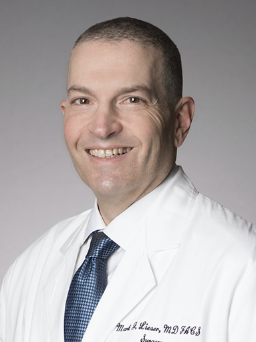 Mark Lieser
Mark Lieser
Research Medical Center/HCA Midwest Health
It was, Mark Lieser says, an opportunity too good to pass up: Research Medical Center set out to create an American College of Surgeons-level trauma center, and it wanted him to build the program. All the miles before—from the greater New York/New Jersey area where he grew up and went to medical school, to Michigan, to Minnesota, and to Texas, where he trained afterward and started his career—all of it led him here. And here he stays. “I love Kansas City,” he declares. “I have no intention of ever leaving.” Two factors play into his love for his work here: one specific to his field and one grounded in his work at Research. “Medical science has advanced to where we can keep patients alive now who, 15 or 20 years ago, we could not,” he says. “What’s really rewarding is that we’ve built this trauma center over the past seven years from the ground up, and put in so many processes, built a great team of surgeon partners, and it’s a much better system—that’s what I strive to do. We try to improve continually, to make things better every year.” That’s a challenge at any urban hospital, where the cases involve three times the sector’s rates of injuries politely referred to as “penetrating wounds”—instances of gunfire and knifeplay. But the caseload here is Lieser’s “why.” As a trauma surgeon, he says, “I love the idea that you can look at a problem and immediately fix it with your hands. You don’t have to wait for medications to take effect, you know what needs to be done. Trauma surgery is the ultimate form of that. You see people on the worst day of their lives, seriously injured, and you don’t always have the time to order another test if you’re not certain what’s going on. Sometimes, you have to make very sudden, quick decisions based on limited information. I love the immediacy, the gratification of taking care of patients, even after they’re out of surgery and into ICU. It really is a team sport, not just me, that requires cooperation with so many others in the hospital.” Amidst some of the stresses, there’s an additional measure of gratification during National EMS Week every May. “We call it our Great Save Event, where we find one patient every year, and it’s, ‘Wow, that’s an amazing collaborative effort to get the patient through injury,’ and we celebrate that success,” Lieser says. “They’ll stay with me for the rest of my life because they are the most rewarding saves we’ve had.” At Research, he says, “We live, eat, breathe, and sleep our patients. When they’re not doing well, we take them home with us; it’s really impossible to turn it off. And with the nature of injuries we see, we can’t and don’t save everybody—and those will always kind of haunt you.”
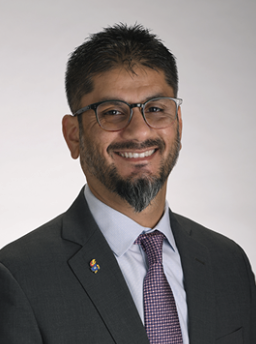 Moben Mirza
Moben Mirza
The University of Kansas Hospital
He was an environmental engineer by training; today, he’s a highly respected oncologist specializing in prostate cancer. Not your typical track to health care delivery. A career that started with a potential leadership pathway in business took a turn for Moben Mirza after his mother was diagnosed with metastatic breast cancer and he returned to the family home in Albuquerque to assist. Engineering graduate school wasn’t appealing, but a mentorship he’d developed in high school with a urologic oncologist rekindled an interest. “Honestly, I can say I did not know what it meant to be a physician and learned the importance and impact of that as I progressed through my education,” Mirza says. “Medical school was truly a life-changing experience for me.” Through it, his focus and passion shifted from design to community, he says, and “medicine became more than doctoring my patients. It became a true calling to leverage myself and the resources afforded to me in a way that promotes hope, unity, and service.” Mirza is one of six children in a family of immigrants from Pakistan, and they were raised with a focus on achievement and education, even though, he says, “We had limited means and resources.” Medical school and residency at the University of New Mexico led to a fellowship in urologic oncology with KU’s medical school, where he has since become a faculty member. For the health system, he chairs the robotic surgery program, and he’s program chair of the national Society of Urologic Oncology, on the Executive Board of the Society of Academic Urologists, among other prominent roles. Specializing in prostate cancer also had a personal appeal. “My father and grandfather had been affected by it,” he says, and “my mother’s diagnosis of breast cancer also made a fight against cancer a natural draw for my mind and peace. Urology also satisfied my engineering mind since problem-solving in urology has many overlaps with engineering, including applications of technology and surgical techniques.” Prostate cancer is largely a function of aging, and the youngest members of the Baby Boom generation turn 60 this year. There’s no shortage of new cases in a field that is already stressed for physicians. But Mirza is girded for battle. “As physicians, we have a higher level of ownership and responsibility toward people, which is a constant stress on the life part of work-life balance,” he says. “Physician burnout is a very important and real phenomenon. I am very grateful to God that I don’t experience this.” Medicine has been a pathway toward fulfillment in career, family and community life. “My goal is to leave this world better than I found it,” he says. “I stay grounded and driven by wife’s love, my parents’ prayers, my faith and belief that God is watching me and I should see Him in my intent, my words and my actions.”
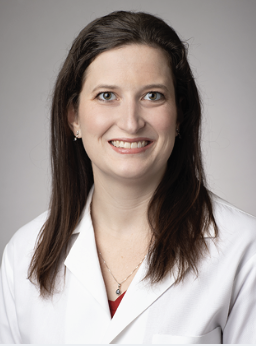 Jessica Parrott
Jessica Parrott
Midwest Perinatal Associates/HCA Midwest Health
Being a doctor was Jessica Parrott’s intention since … well, just about always, going back to the regular check-in with her grandfather living across the street after his heart attack. She was still in pre-school, mind you. She even had a track in mind, doing pediatric craniofacial surgery to treat physical deformities. Then it hit her in the delivery room—as a new mom, not a doctor: Fetal medicine. “I called my then-fiancé at 1:30 in the morning when I delivered, to tell him then and there what I would be doing” as a physician, she says. She’s a St. Louis-area native who earned a degree at William Jewell, went to Mizzou for med school, and then came to this area for her residency and fellowship at KU Medical Center. Dealing with high-risk pregnancies every day can be an emotional roller coaster. The highs come with each win. The lows are another story. “There are definitely some days where you get multiple bad fetal abnormalities in a row,” Parrott says. “It’s sad in a way, but these patients, a lot of them tell me thank you at the end. Still, to this day, that may seem like an odd thing. Here I am, telling them, in a lot of cases, the most devastating news they’ve ever heard, but they end up thanking me for taking the time to explain their options and provide assurances that it was nothing they did.” Hard at times, but still rewarding, occasionally in unexpected ways: “A lot come back for the next pregnancy, and it’s that much more rewarding when everything turns out perfectly normal, and we get to celebrate along the way,” Parrott says. The tools to produce better outcomes—and make better decisions—continue to improve. “The quality of the ultrasound machines, every time we get a new one, the amounts we’re able to see and diagnose prenatally continue to increase,” she says, leading to better planning and better outcomes. “The biggest area we see advances in is the genetics. A lot of what we find has an underlying genetic abnormality; the amount of information we can gain is increasing.” That’s a good thing because the average age of patients continues to go up, as well. “Oh, yeah—and with that, there’s a higher risk of complications,” Parrott says. “The older you are, the higher your chance of gestational diabetes and higher blood pressure, along with the risk of chromosomal abnormalities like Down syndrome. At any given time, we’re seeing at least one person in their 50s.” On the other end of the spectrum, her unit is now able to save premature babies as young as 22 weeks, “with outcomes that are surprisingly good,” she says. “We’ve seen some at 22 weeks who come back to visit at two or three years old, and you would never know they’d been delivered so early.”
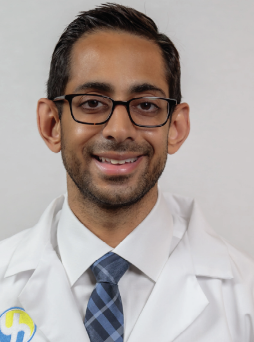 Anand Rajpara
Anand Rajpara
University Health
“Leper colonies” is a phrase that evokes images from biblical times. Not for Anand Rajpara (aka Dr. Raj). When he was old enough to accompany his father—a pulmonary and critical-care physician—on medical mission trips to Africa and India, young Anand had an awakening. And a life direction. “On one of our trips to India, we volunteered at the Sahyog Kustha Yagna leprosy village in Gujarat,” Rajpara said. “It was heartbreaking to see these patients, along with their children, be outcast from society due to the social stigma associated with their disfiguring skin disease. I chose to become an academic dermatologist because healing a patient’s skin can have a tremendous impact on quality of life, and there is nothing more gratifying than seeing the immediate physical and emotional improvement a patient experiences with expert dermatological treatment.” It wasn’t an unexpected outcome; “I knew I wanted to become a doctor at an early age” because of his father’s influence, he says, and the overseas missions “also instilled in me a passion for health equity and the desire to care for underserved and marginalized patient populations.” A degree in neuroscience from Emory University led to medical school at the University of Maryland, then to Kansas City at the University of Kansas Hospital. After his residency, he began volunteering at KC CARE clinic, where one of his first patients—with full-body psoriasis and debilitating psoriatic arthritis—could barely walk. “As a result, he had lost his job and health insurance,” Rajpara says. “Eventually, we were able to get the patient free access to a highly efficacious biologic medication that put his disease into remission.” The man went back to work, secured health insurance, and “for the first time in several years, he was able to play outside with his two young children,” Rajpara says. “These types of patient encounters are deeply fulfilling and remind me of why I became a doctor in the first place.” He has his hands full these days with explosive growth in the number of skin cancer cases, especially among Baby Boomers who were largely raised without ever hearing the term “sunscreen.” “Approximately one in five Americans will be diagnosed with a skin cancer by age 70 as the incidence of both non-melanoma and melanoma skin cancer continues to rise rapidly,” Rajpara says. While early detection and timely treatment of skin cancer leads to an excellent prognosis, he says, “The challenge will be ensuring that all these patients receive timely access to dermatological care.” To that end, he says he’s excited about the therapeutic advances occurring in the field. “There are numerous promising biologic drugs currently undergoing clinical trials, and I look forward to the day when no patient will have to face a reduced quality of life due to chronic inflammatory skin disease.”
 Shaun Steeby
Shaun Steeby
Stormont Vail Health
Word of advice: Do not challenge Shaun Steeby to see who can put a puzzle together fastest. As an orthopedic trauma surgeon at Stormont Vail Health—and medical director of that surgical unit—tasks like that are her specialty. “Trauma surgery is sort of like putting a puzzle back together,” she says. “You have to be quick and efficient while also seeing the big picture. But through all the chaos, there’s this calm that happens to a lot of other health care workers who work in trauma. You start to break the situation down into a systematic process. Everyone knows their role and is working toward the same goal of helping the patient recover.” Steeby, who has been with Stormont Vail since
2015, earned a degree in molecular biology (while minoring in chemistry and physics) from the University of Denver, then her M.D. from the University of Kansas School of Medicine, followed by orthopedic surgery residency at the University of Missouri. She now directs a team that addresses all manner of accident trauma and sports injury, from broken bones to ligament tears and ruptured tendons, as well as chronic conditions like arthritis or tennis elbow. As an orthopedist, she’s something of a rarity: fewer than 10 percent of those in her line are women. “I worked hard for a very long time to have a seat at the table, and I am ever so grateful for the opportunity to represent women, surgeons, and orthopedics. It is an honor,” she says. In turn, she tries to encourage young women to pursue careers in medicine—surgeons in particular. She’s living proof that women in medicine can not only excel at work but have a home life, too. “Several people tried to deter me from pursuing a career in surgery, claiming it was not possible to have a meaningful personal life as a surgeon and that I wouldn’t be able to be the mother my child deserved,” Steeby says. “This argument is seldom presented to men, which speaks to the complex challenges and emotional factors that all working women face at some point.” She’s a board-certified member of the Orthopaedic Trauma Association and is an AO Trauma North America Fellow. Her record in both academia and health care settings has included research, posters, presentations, and various scientific courses in orthopedic surgery. All of it comes to bear as she embraces the goal of helping restore injured patients to their desired lifestyle, and she finds the setting at Stormont Vail and Topeka a perfect fit. “Most people who do what I do tend to do it in big cities and academic centers,” Steeby says. “Trying to keep good quality care within the community was really important to me.”
 Clayton Theleman
Clayton Theleman
Liberty Hospital
Clayton Theleman makes his living by wielding a scalpel, a career path he came to after an experience on the business end of one. The farm kid from Natoma, Kan., was a sophomore at Kansas State University when he had his first career-affirming encounter. “I underwent an operation and I had a lot of questions about the ‘how’ of the repair and the mechanics of the surgery,” Theleman says. “From that moment on I wanted to be a surgeon.” It wasn’t just the experience itself that shaped his outlook; he had the fortune of going under the knife with a physician who would provide more than just surgical services. “Undergoing surgery, though not particularly enjoyable, did open my eyes to the medical field,” Theleman says. “Fortunately my surgeon, Dr. Abdul Haleem, took the time and embraced my curiosity and welcomed me into his OR to observe an operation.” Anyone who grows up in a rural environment understands that the ability to fix things is an essential life skill, and Theleman was primed to add another. “Diagnosing then fixing the problem with almost immediate improvement is a very special and unique privilege that surgeons are blessed to experience,” he says. “I find incredible satisfaction in the rewarding career of general and trauma surgery.” He earned his medical degree from The University of Kansas School of Medicine, did his residency at the University of Illinois’ Peoria campus, and eventually came back closer to home. Today, he’s chief of surgery and trauma director for Liberty Hospital, where officials say that his approach to communication with patients puts their minds at ease, and has earned him consistent excellent reviews. They also say his goal for every patient is to allow them to return home to their families the soonest possible. Theleman, in turn, sees the organization as a perfect match for him. “The city of Liberty and Liberty Hospital both offer a feeling of community,” he says. “The camaraderie amongst staff and neighbors is difficult to find in the proximity of a great city like Kansas City, Liberty checks all those boxes. The hospital is always advancing our technology and facility to offer the best and most up to date medical care we can provide to our patients.” Those tech advances, he says, have been profound. “In the short 10 years of my surgical training and practice, I have seen incredible advancement in minimally invasive techniques and variety of surgeries offered that can be performed in this fashion; this is largely due to the Da Vinci robot and its increased emphasis in the general surgery practice.” The payoff for patients, he says, is a reduction in pain after surgery and the length of their hospital stay, and significant reductions in rates of surgery-related complication rates. “All significantly decreased, leading to better outcomes and faster recovery,” Theleman says.
When it came time to set down career roots, Kenneth Thomas didn’t stray far from his Kansas City origins. “My father was a steel worker, and we didn’t have a lot—we just didn’t realize what we didn’t have,” he says. “Growing up in that environment, I’d see kids who had severe burns and things, and I’d hear the old folks say you didn’t go to the ER without something hanging off you.” Influenced by his peers who had life risks one doesn’t encounter nearly as often in the suburbs, he chose pediatrics in the urban core. More than 30 years later, he plies his trade at Swope Health, which treats perhaps the neediest patient population in the region. He was intentional about not treating adults: “You tell them what to do, they don’t do it, and come back sicker and tell you it’s your fault,” he says. “Of course, we have it twice as bad as doctors because a lot of times, we don’t do what we’re supposed to either.” There is a joy factor attached to his work, even when he’s seeing patients who aren’t feeling their best. “You get to play with kids all day—even those who are sick still play. To make them smile and laugh, there’s a lot of reward in working with children.” It’s also rewarding, he says, to make a difference in the lives of families whose lack of resources is evident. “When you make a difference in their lives, you can really see it,” Thomas says. “I’ve had the opportunity to practice in affluent areas but turned it down. Most of us at places like this, we choose to be here.” Yet treating children can be a challenge. “I don’t say this to be derogatory, but it’s almost like being a veterinarian—our patients often can’t tell us what’s wrong. So pediatrics is more complicated: You have to know physiology, signs, symptoms, and differential diagnoses because they can’t tell you what they’re feeling.” At a federally qualified health-care center, the mission at times isn’t just providing care, but helping young patients live long enough to care for themselves in an environment fraught with risk. But the reward is handsome when it works. “Now I’ve got some who have grown up, bringing in a second generation,” Thomas says. “At first, it was, ‘Oh, my goodness, that’s a second generation.’ But that’s not a bad thing. I’m not to generation three yet, but I think I’m getting pretty close.” Particularly gratifying have been advances to help the toughest cases—premature deliveries. “Clinically, I’ve taken care of premies in delivery who, without intervention, would have died. Some now at 28, even 27 weeks. That’s satisfying coming out of the delivery room knowing you stabilized a baby who otherwise would not have made it. Really satisfying.”